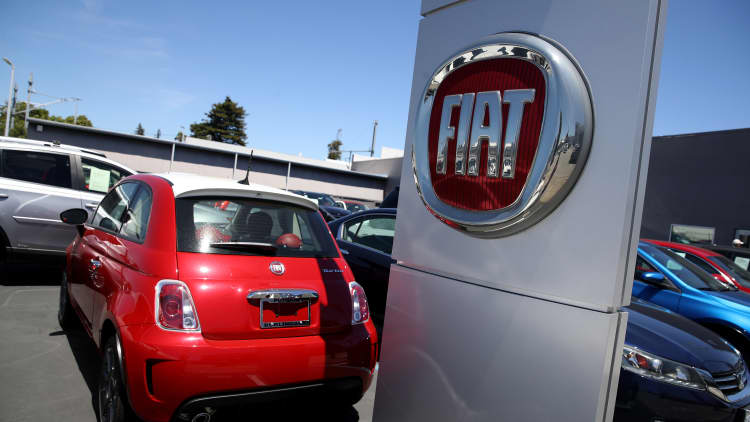Fiat faces a difficult future in the U.S., less than a decade after an attempted comeback.
The Italian car brand and arguable style icon is suffering from extremely low sales in a market that has less and less interest in the tiny cars that has made it famous.
In 2018, Fiat sold more than 15,000 cars in the U.S., down from a high in 2014 of over 46,000. When the brand had first returned to the U.S. in 2010 after a 27-year absence, Fiat Chrysler and the late Sergio Marchionne, who served as CEO, had hoped to sell 50,000 Fiats in the country in its first year.
At the center of that strategy was the Fiat 500, a small but stylish city car that was invented in the years following World War II as a practical car for the masses of Europe. Over the years, the 500 has become something of a legend of automotive design, even earning a spot in the Museum of Modern Art's collection in New York.
"I think [Marchionne] wanted the Fiat 500 to be the Volkswagen Beetle of the Fiat brand," said Jeff Schuster, president of global forecasting for LMC Automotive. "It has a history, it has a cult following to a degree. It is not just another small car. The brand wanted to connect with those buyers who remember the history of the 500."
But it did not have a Beetle-like impact.
It didn't help that Fiat's vehicles earned less-than-stellar reviews and ratings from groups such as Consumer Reports and J.D. Power, and the U.S. auto market made an unprecedented shift toward pickup trucks, SUVs, and crossovers.
Fiat Chrysler has repeatedly said it doesn't plan to abandon Fiat in the U.S.
"In North America, we continue to offer an attainable, all-turbo lineup of Italian-designed, fun-to-drive cars that get at least 30 [miles per gallon]," FCA representative Bryan Zvibleman said in an interview. "As outlined in our five-year plan last year, Fiat (together with Chrysler and Dodge) will get 25% of investment spend and will represent 20% of net revenues. In fact, we just launched our new Fiat 500X compact CUV/SUV. The compact CUV/SUV segment is one of the fastest growing segments in the industry."
He added that Fiat's results in quality surveys continue to be skewed by limited models and sample sizes, as was the case in the recently released 2019 J.D. Power U.S. Initial Quality Study that did not include the brand in industry rankings.
Fiat's survival in the U.S. seems unlikely, said Jon Gabrielsen, an economist who advises automakers and suppliers. In 2018, FCA sold 4 times as many Jeeps in Europe as Fiat and fellow Italian import Alfa Romeo sold in the U.S. It is unlikely any of the variants of the 500 will survive in the U.S. or Canada, he added.
One way FCA could save Fiat is by turning it into an electrified city car brand, said Schuster. The company already markets the 500e, an electric version of the 500. Both Europe and the U.S. are moving toward electric and hybrid vehicles over the long term, but the size and price point of Fiat's lineup makes it hard to see how they can grow much in sales.
"So I think the outlook is still very limited, and I think it is really hard to sustain volume, even if you got it back up to 20,000 or 25,000 units," he said. "... I think the possibility of Fiat pulling out of the U.S. is there."



